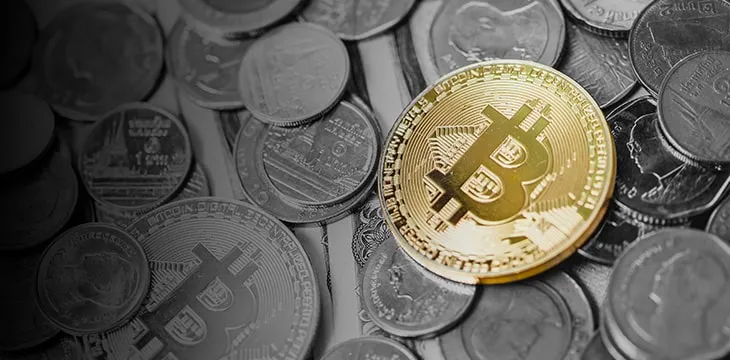|
Getting your Trinity Audio player ready...
|
This series looks back on the history of Bitcoin. Read parts one, two, three and four.
It was 2011 and the world was still having a hard time getting exactly what Bitcoin was. In the previous year, the first Bitcoin transaction had taken place—two pizzas were bought for 10,000 Bitcoins. Still, it was an enigma to most. The media didn’t make it any easier, with Bitcoin being linked to all sorts of things, the most popular of which was ‘a currency for the drug dealers.’ Still, it forged on.
2011 was a landmark year in the life of Bitcoin, for more reasons than one. The first significant event took place in January that year when block 105,000 was mined, which meant that the supply of Bitcoin had hit 25% of its target.
During this time, Bitcoin’s price had also been rising steadily, buoyed by the coverage it had been receiving on media outlets, both the good—such as the coverage on the pizza purchase the previous year—and the bad—such as being deemed as the currency of drug dealers.
The next milestone for Bitcoin took place in February, the first time that Bitcoin achieved dollar parity on Mt. Gox. This meant that the price of one Bitcoin was equal to one U.S. dollar. The price had shot up over 130,000% since Bitcoin’s launch and over 15,000% in less than a year. This got the attention of many, with Bitcoin.org, one of the few crypto-focused sites at the time, almost crashing due to high traffic.
While there are hundreds of exchanges right now offering crypto trading, back then it was different. The infamous Mt. Gox was the dominant one and was almost singlehandedly responsible for determining the price of Bitcoin globally. In March that year, Jed McCaleb—the man behind Stellar and XRP—sold the exchange to Mark Karpeles. Shortly after, a few other exchanges were opened to compete with Mt. Gox, including Britcoin, which offered trading in GBP; Bitcoin Brazil, which offered trading in Brazilian real; and Bitmarket.eu which offered trading in Polish zloty.
The price of Bitcoin took off again in the months that followed on the back of increased demand on the new exchanges. In June, it set a record when it hit $10 for the first time. However, it was after Gawker published a piece on the use of Bitcoin on Silk Road that everything changed. The report outlined just how rampant Bitcoin use was in the dark web marketplace, with over 300 drugs being listed in Bitcoin.
The piece became a viral hit, letting the world know that Bitcoin wasn’t a hobby project for geeks, it was already in use. People flocked to crypto exchanges to get a piece of the pie and just a week after the article was published, Bitcoin hit $31.
Just days later, Mt. Gox was hacked, with the attacker selling as much Bitcoin as he could. This drove the price to $0.01 in hours.
But it wasn’t solely about the price movements in 2011. The year also saw the launch of the world’s second crypto, Litecoin, three years after Bitcoin. As the name suggests, Litecoin was supposed to be the ‘lite’ version of Bitcoin, offering better features. Developed by ex-Coinbase and ex-Google engineer Charlie Lee, Litecoin had a shorter block generation time, increased the number of maximum coins and relied on scrypt, a different hashing algorithm to the SHA-256 that Satoshi Nakomoto used with Bitcoin.
The year also saw yet another cryptocurrency launched, known as Namecoin. The project started as a discussion on the Bitcoin Talk forum, one in which even Satoshi participated, that called for BitDNS, a Bitcoin-based DNS service. This idea was in part spurred by the Bitcoin community’s fear that in time, Bitcoin-related domains would be censored.
The year also had its share of Bitcoin scams. The first involved a Polish exchange named Bitomat which revealed to its users that it had overwritten its entire wallet by accident. But perhaps the biggest scam of the year took place with MyBitcoin, a Bitcoin wallet that dominated the scene back then. The proprietor behind it disappeared for a number of months, leading people to conclude that he had made off with their money. However, he reappeared after months of inactivity, only to tell the users that the wallet had been hacked and all the Bitcoins stolen.
Despite the ups and downs, Bitcoin fought through 2011 and went on to become the worldwide phenomenon that it is today.

 08-23-2025
08-23-2025 





